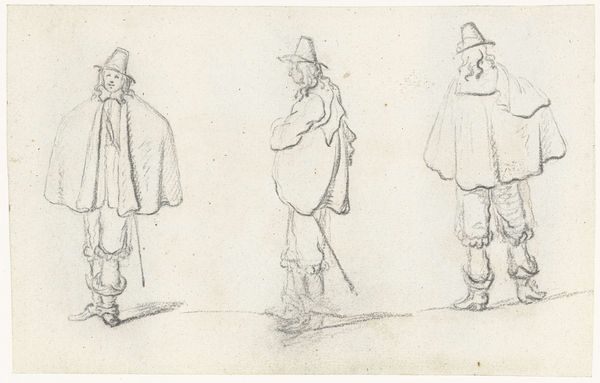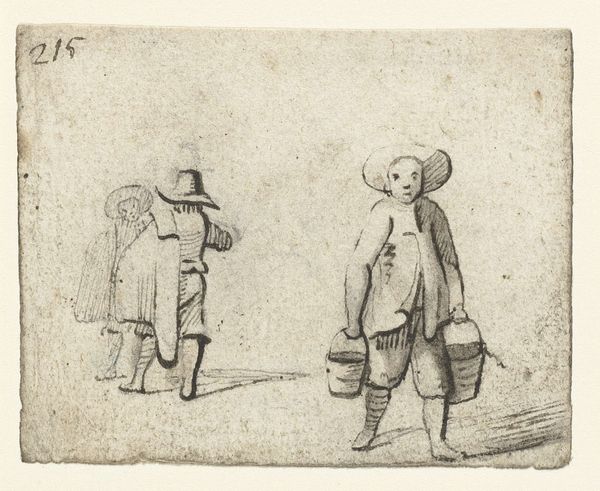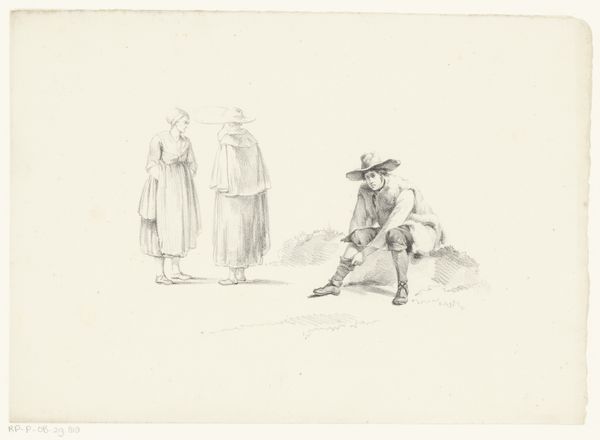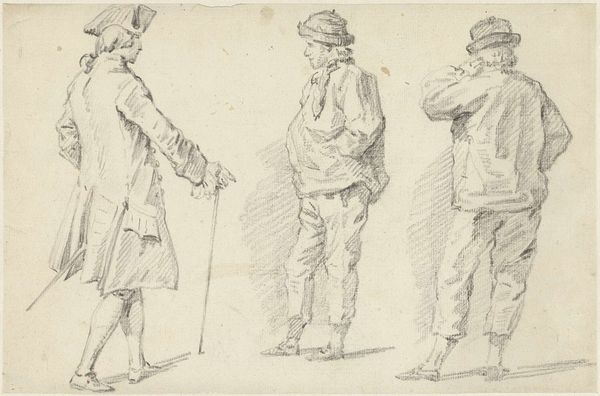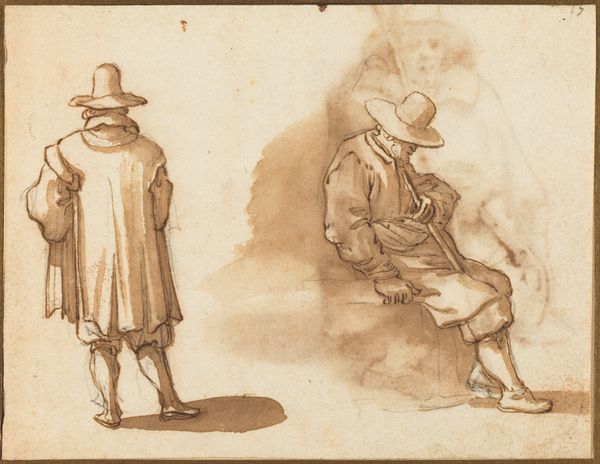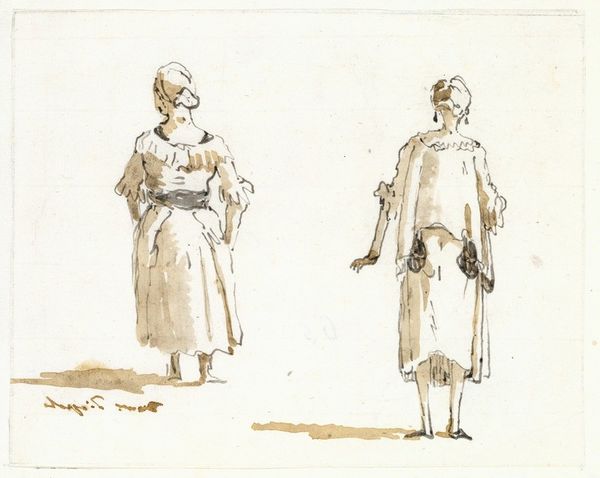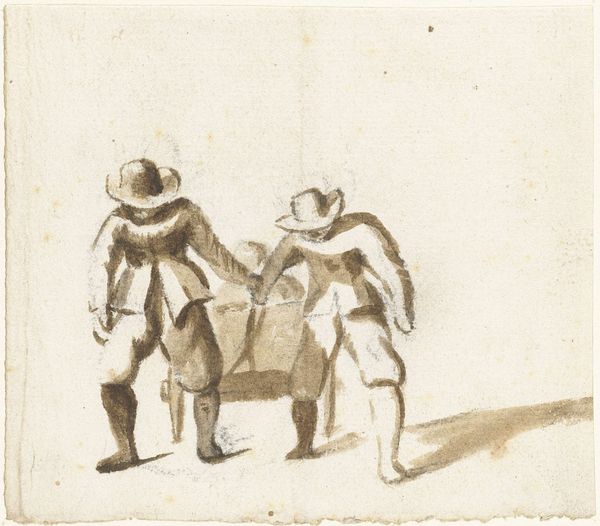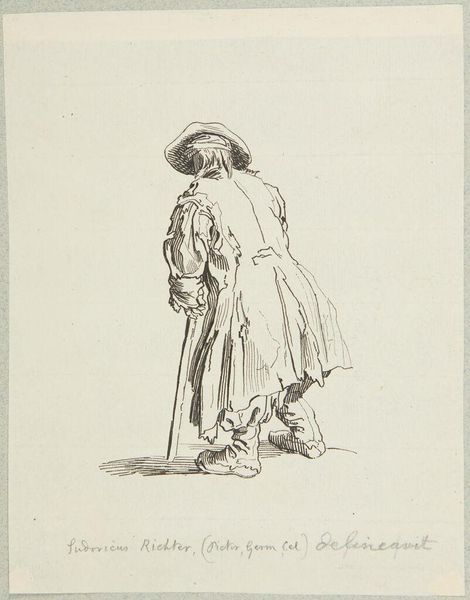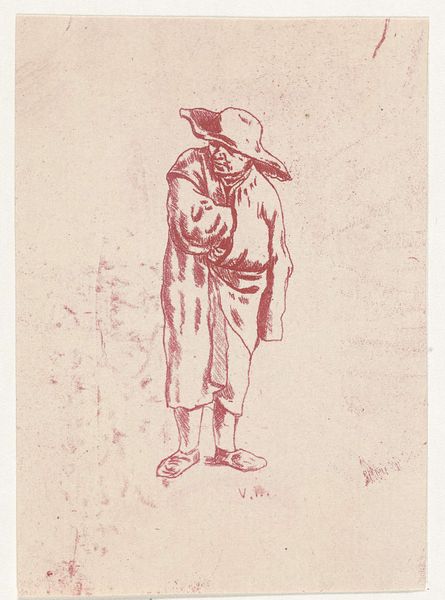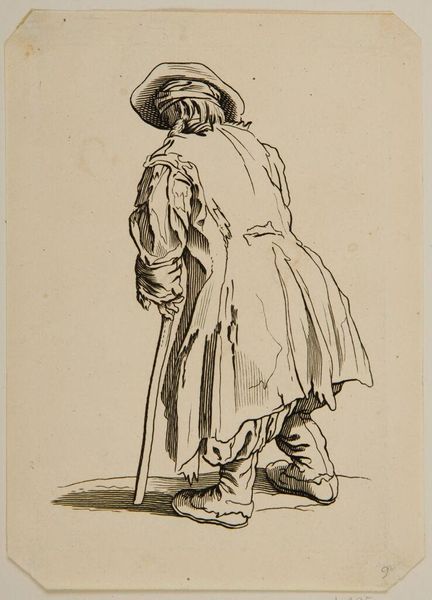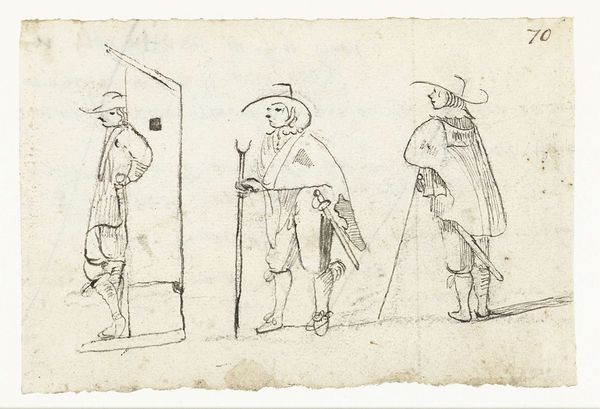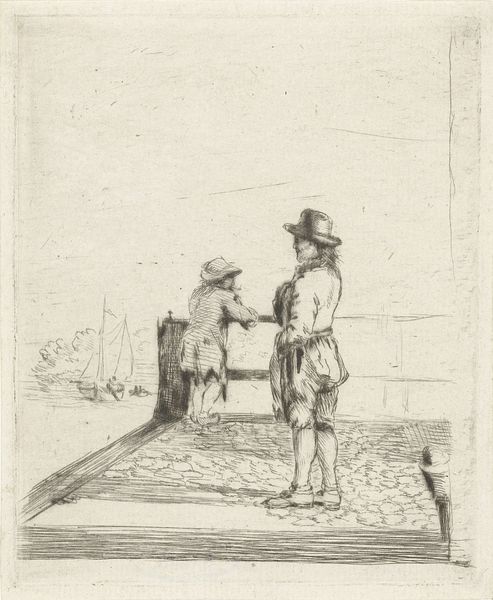
drawing, paper, pencil
#
portrait
#
drawing
#
imaginative character sketch
#
toned paper
#
light pencil work
#
quirky sketch
#
pencil sketch
#
figuration
#
paper
#
personal sketchbook
#
sketch
#
romanticism
#
pencil
#
sketchbook drawing
#
storyboard and sketchbook work
#
fashion sketch
#
sketchbook art
Dimensions: height 180 mm, width 264 mm
Copyright: Rijks Museum: Open Domain
Editor: Here we have Albertus Brondgeest's "Two Studies of a Standing Man, Hands Behind His Back," a pencil drawing from 1816, on paper. I find the drawing quite delicate; the strokes are so light. What strikes you when you look at this piece? Curator: Well, beyond the visual delicacy, let's consider the materiality of the piece itself. Look at the toned paper—what kind of paper was available at this time? How does the specific tooth and absorbency of that paper *shape* the artist's mark-making? The soft pencil allows for that lightness you observed, but what kind of labor went into producing that pencil? Were there mines? Who were the workers? These considerations immediately open the image for me. Editor: That's fascinating! I hadn’t thought about the physical process of making the materials themselves. Curator: Exactly! Consider this Romantic era work as reflecting the dawn of industrial processes, impacting even the materials available to the artist. And think about how the accessibility of these materials would influence artistic output. Was sketching becoming a more democratic practice? Editor: So you're saying the artwork isn't just the image itself, but a record of material history and possibly social shifts, too? Curator: Precisely. This drawing provides access to broader labor systems and technological shifts within the early 19th century. I see how the method by which a pencil renders these portraits reflects a social and physical network. What else do you see within the interplay of pencil and paper? Editor: It really changes my perspective to think of the social context embedded in something as seemingly simple as a pencil sketch! Now, seeing it, the “Romantic” subject has material roots in the era's means of production, labor, and consumption, expanding the implications. Curator: It certainly gives us food for thought! I hope that our perspective on labor and material offers a fuller context for this sketch.
Comments
No comments
Be the first to comment and join the conversation on the ultimate creative platform.
